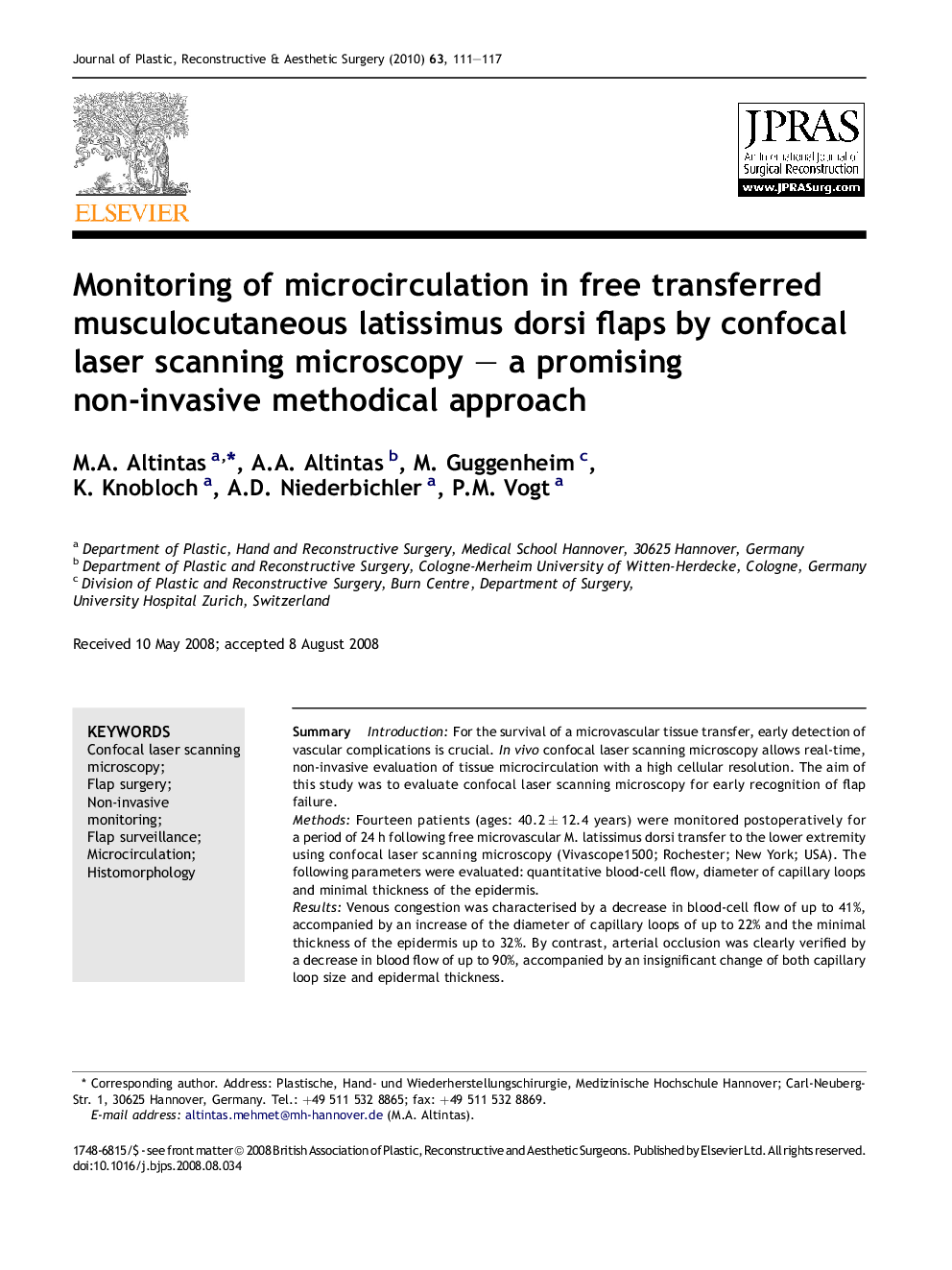| Article ID | Journal | Published Year | Pages | File Type |
|---|---|---|---|---|
| 4121315 | Journal of Plastic, Reconstructive & Aesthetic Surgery | 2010 | 7 Pages |
SummaryIntroductionFor the survival of a microvascular tissue transfer, early detection of vascular complications is crucial. In vivo confocal laser scanning microscopy allows real-time, non-invasive evaluation of tissue microcirculation with a high cellular resolution. The aim of this study was to evaluate confocal laser scanning microscopy for early recognition of flap failure.MethodsFourteen patients (ages: 40.2 ± 12.4 years) were monitored postoperatively for a period of 24 h following free microvascular M. latissimus dorsi transfer to the lower extremity using confocal laser scanning microscopy (Vivascope1500; Rochester; New York; USA). The following parameters were evaluated: quantitative blood-cell flow, diameter of capillary loops and minimal thickness of the epidermis.ResultsVenous congestion was characterised by a decrease in blood-cell flow of up to 41%, accompanied by an increase of the diameter of capillary loops of up to 22% and the minimal thickness of the epidermis up to 32%. By contrast, arterial occlusion was clearly verified by a decrease in blood flow of up to 90%, accompanied by an insignificant change of both capillary loop size and epidermal thickness.ConclusionConfocal laser scanning microscopy appears to be a useful non-invasive tool for early recognition of flap failure during the monitoring of microsurgical tissue transfer prior to its clinical manifestation.
